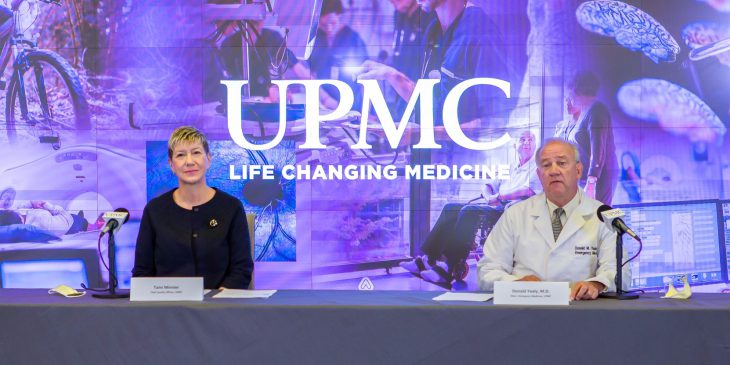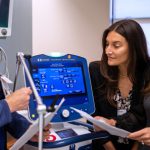As the nation sees an uptick in positive test results for COVID-19, UPMC officials today stressed that the health system is seeing its lowest numbers of severely ill patients since early spring.
“We need to change our mindset and focus on severity of illness, rather than just counting the number of new infections. For the vast majority of the people testing positive, their illness is mild or they don’t even have symptoms,” said Dr. Donald Yealy, UPMC’s senior medical director and chair of emergency medicine. “This is why we watch the hospitalization rate and the need for intensive care, and those numbers are down. This indicates that the people in our communities who are most vulnerable to the disease aren’t getting it – and those who are tend to be the least affected.”
Yealy shared that UPMC has its lowest numbers of COVID-19 patients systemwide since early April, and 14 of those are on ventilators, a nearly four-fold decrease since the peak in mid-April.
UPMC Chief Quality Officer Tami Minnier said that while the low hospitalization rates are heartening, UPMC is preparing now for the fall – when cold and flu season could add to the nation’s nervousness about COVID-19.
“We’ve worked hard to get our care levels back to 100%, and we intend to do everything in our power to continue providing the care our communities expect and need this fall and winter,” she said. “The reality is that, come October and November, we’re going to see cold and flu-like symptoms in our communities. For the most part these won’t be COVID-19 infections.”
UPMC’s preparations include:
– Building a three-month supply of personal protective equipment.
– Growing its 3-D printing program for creating needed supplies.
– Potentially accelerating distribution of flu vaccine to staff.
– Strengthening the UPMC Tele-ICU app to bring critical care services
to remote facilities.
– Expanding specimen collection facilities for COVID-19 testing.
– Instituting protocols for participation in COVID-19 vaccination trials.
– Continuing community surveillance of respiratory infections, including
COVID-19, flu and respiratory syncytial virus.
“In the meantime, we need you to continue doing your part – with physical distancing, wearing masks and hand-washing,” Minnier said at the press briefing. “We all have a responsibility to protect our most vulnerable, ill and compromised loved ones, even as we all eagerly return to a more normal life.”









